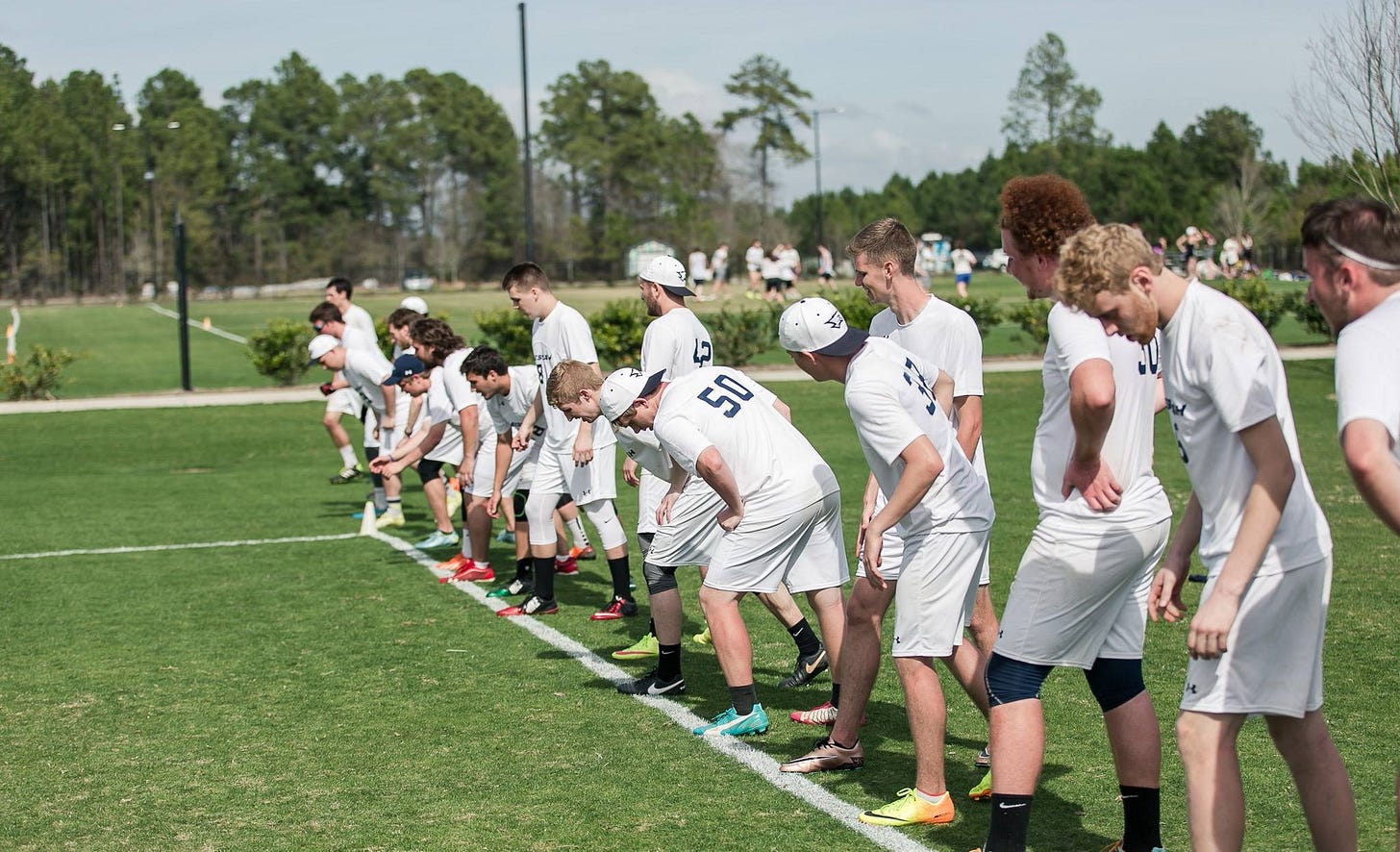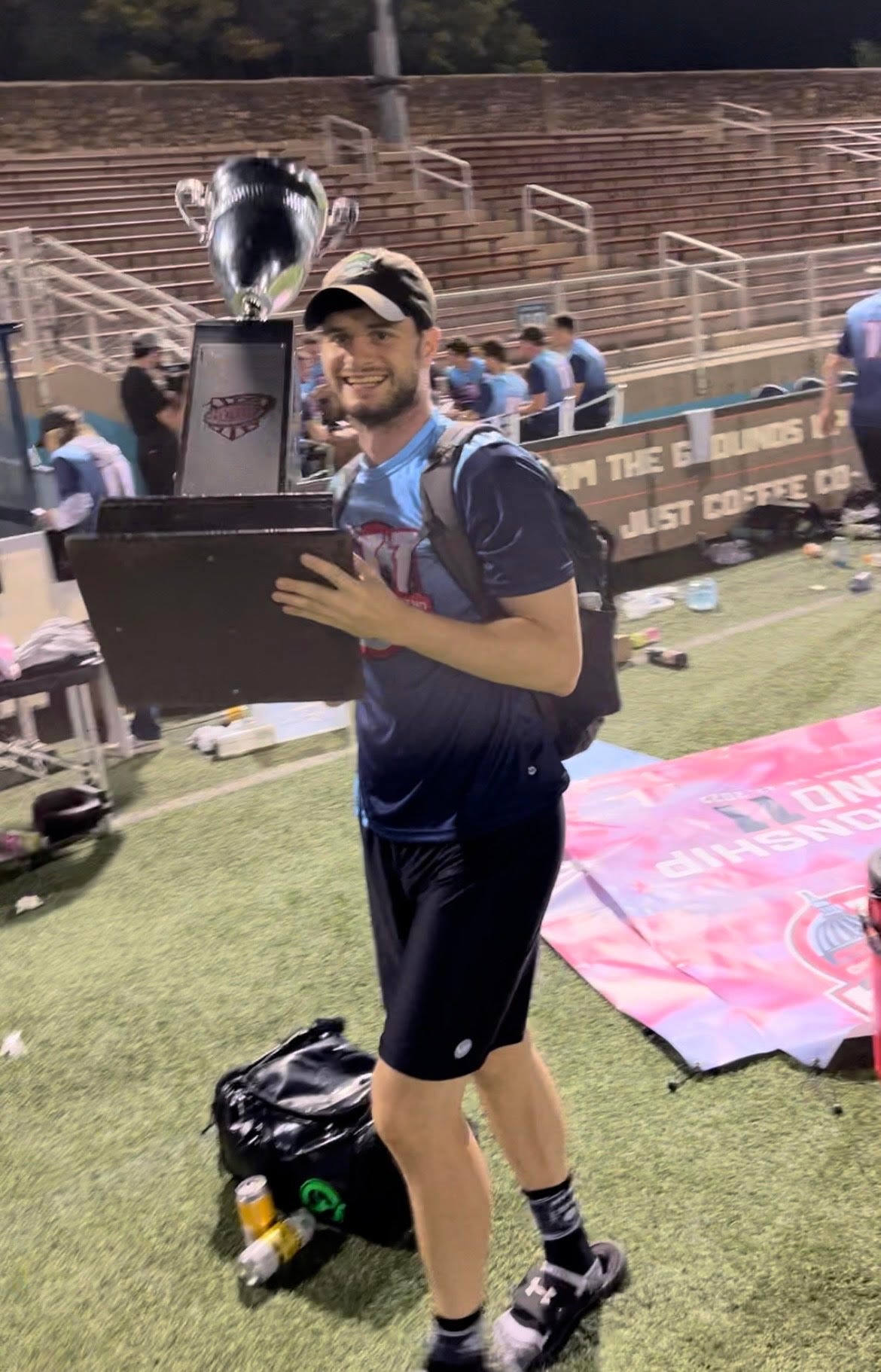The off-season is time for dreaming big
Whether you are a player or a coach, this is the time of year to re-imagine on-field roles, and make a plan to grow.

As a huge fan of the Orioles, I grew up believing that hope really did spring eternal every February as the pitchers and catchers reported for spring training. Maybe this is the year that Nolan Reimold would put it all together (it never was), or the year Matt Riley would come up to the majors and anchor the rotation (it wasn’t). In February, we could daydream about the coming season—a season where finally the team would contend and we’d see October baseball again—before crushing reality would set in.
Over the course of an ultimate season, players settle into their roles. The coaching staff will look for ways to maximize the roster so that the pieces fit together, and hopefully grow to be greater than the sum of their parts. During the stretch run, players are asked to perfect the roles they are given and focus on being excellent at their jobs. This is all for the team, and it’s a beautiful thing. It can also be limiting.
But February! The competitive high school and college seasons are kicking off, pro teams are wrapping up tryouts and ramping up the pre-season, and club tryouts are just a few months away. Any team and any player can be anything this time of year. And with enough imagination, intentionality, and hard work, a player’s role in the coming season could look very different.
This kind of productive daydreaming should ideally be done by both players and coaches on behalf of their players. I’ll split this into two pieces, but coaches should read the player piece and vice versa—understanding the other side’s perspective and process is going to be helpful in your own.
Coaches - All the pieces matter
As you build a roster, you are considering the context. So much context. The goals of the team, the positions and attributes of key returners, commitment and availability. It’s easy to start to think ahead and label players—especially veterans—as known quantities. Doing so gives you even more context going into tryouts and you can hone in on younger players or new recruits and think about how they might best fit.
This makes a lot of sense, of course, and it’s only natural. But leaving your returners (or returning tryouts) in the same box as the year before can be a huge missed opportunity. Ultimate is a sport that most people start later in life than other skill sports, and so it’s not as uncommon as you would think to see players develop new skills and abilities later in their careers. And the idea that a long-time player can’t learn to do something new is ignoring the fact that they have seen a whole lot of ultimate, and a switch to a new role may come more naturally than even they might expect.
Here’s one example. Going in 2022, the Empire had a very…Empire problem: We had too many excellent defenders on the team (I know I know, I feel your eyerolls and I’m sorry), and most of them were cutters. We were looking at a situation where we could be leaving a defender who would start on most teams off of our roster because we couldn’t take that many cutters.
Our solution was to ask Mike Drost to handle for us. Now, Mike is a legend of the league, to be clear. He’s one of only two people with over 200 blocks in UFA history, he’s second in league history in games played, and he’s played in almost two full seasons worth of playoff games. One thing he had not done, entering his first season of masters eligibility, is handled. But he’s a smart player with solid disc skills, knows where to be and when, and does not panic.
The outcome was Mike turning into an absolute rock in our backfield. He finished the season with no turnovers, threw an assist in our rematch win against Carolina in the semis, and threw the final completion as the seconds ticked down on our championship win. Those contributions were in addition to what we were able to keep with this move: another elite downfield defender on a line already full of them.
Who on your team can you reimagine? Maybe you have a turnover-prone D-line handler, someone with some athleticism and powerful throws that hasn’t quite put it all together consistently. What if they are a key O-line initiator waiting to be discovered? With their quickness, they maybe they can get in cuts reliably, and now when they catch the disc, they are in motion, and have fewer players and a clearer field to look through when they are making their big throw decisions. The role may be to some considered a bigger, harder, more critical role, but what if it’s a role that minimizes their weaknesses and capitalizes their strengths? Maybe the go-go cutter on O who never stops and cuts everyone off is actually a perfect counter-attack sparkplug for your D-line. Maybe the recent convert to the sport is a fantastic O-line finisher, where their understanding of space can be best capitalized on by their line-mates.
Players - Becoming undeniable
It’s possible you are way ahead of me here. You feel like you should have had a bigger role ages ago and you are just waiting for everyone else to catch up. It’s possible you’ve never considered changing or growing the type of player you are. You are good at your job and it’s just never crossed your mind.
Either way, the first step to dreaming of a shift is some self-reflection and self-awareness. You have to know yourself and where you are before you make a plan to change. What are your strengths? Where do you need to grow? What skills have you shown as production on the field, and which have yet to be discovered by your teammates?
Once you have that in mind, consider your team. Is there a hole in the lineup you think you can fill? Is there a role you believe you can do better than it was done the year before? Where are the obvious opportunities, and where might you be able to push the issue?
From there, it’s time to decide where to prioritize your time and energy. A lot of people are enticed about pushing their ceiling. It’s exciting to push your limits, and it’s absolutely critical if you are hoping to jump a few levels.
But don’t forget your floor. In every summer league I’ve been in, there’s always someone with a mammoth flick. They can throw it as far and with as much beauty as most anyone at club nationals. The difference, in addition to how the rest of their game compares, comes down to consistency. Top players with that throw can complete it at an elite rate. The guy in my summer league hits it a touch under half the time. Build your floor. Become more consistent. Playing to the best of your abilities nearly always might make a bigger difference than anything else you can do.
I think most players think they don’t have much control over what teams they make and what role they play. And to some degree, that’s true. You can’t change what needs a particular team has. But you can challenge your team leadership’s perception of you. If you are competing with someone for a spot, it’s not enough to be 10% better than they are at the desired traits. There’s wiggle room there, room for interpretation. You need to be clearly the right choice, so obviously the person for the job that even your very foolish leadership (just kidding coaches) can see it. Aim beyond where you hope to land. That is in your control, and taking ownership of your own development is such an empowering feeling.
Talk it through
All of this daydreaming doesn’t help you unless you invite the other party into the daydream with you. Whether you are a player or a coach, you should communicate what you are think with the other stakeholder. Ask them to keep an open mind, and enter the conversation with a spirit of collaboration—it’s possible they aren’t completely on board, but your idea might spark a new one in them. Explain why you think this new position shift is interesting, both for the player and the team. Talk through what it might take to get there. Try to get on the same page with the vision. And then, of course,
Do the work
Dreaming about a move is day one stuff. Once you’ve got all your thoughts together and everyone involved is on board with giving it a go, it’s time to invest in making it happen.

What that looks like is going to be so specific to where the player is coming from and where they are hoping to go. If you want some concrete plans on that, call me! But one thing that’s important regardless of the change is to make a plan that is focused and specific. I am quite sure that LeBron James does not do the same screen navigation drills as the incoming draftees. He probably hasn’t done those drills consistently in 15 years or more. But I would bet bottom dollar that during his off-seasons in Miami he drilled his three-point shooting constantly, as it rose 7% during his time there.
If the player is moving to handle for the first time, get focused reps in the reset space. More than their teammates. At practice, outside of practice, mental reps, watching film of others in the space. If they are going to be a reset defender after a career of primarily downfield coverage (a move we made with Marques Brownlee, for example), spend time on a very intentional plan of how to use their attributes and abilities (quickness? length?) to create a most disruptive mark and reset pressure they can.
***
February is gray and gross, but it is a month of possibilities. Step out of the box, stretch your legs, and let your mind wander a bit. You might stumble across something that makes this year far different from the last.





Ask yourself what the opponents scouting report would say about you! That’s the analogy I use to initiate self-awareness and facilitate player development
One thing that I think most coaches - whether that be player-led, grassroots, or elite club - often tend to forget is the power in booking out time for a 30 minute one on one chat with each player in your squad. Often we do it with new players or reactively for some reason, but up front having this chat with every player is so important for the reasons you discussed in this post, no promises being made but just getting on the same page.